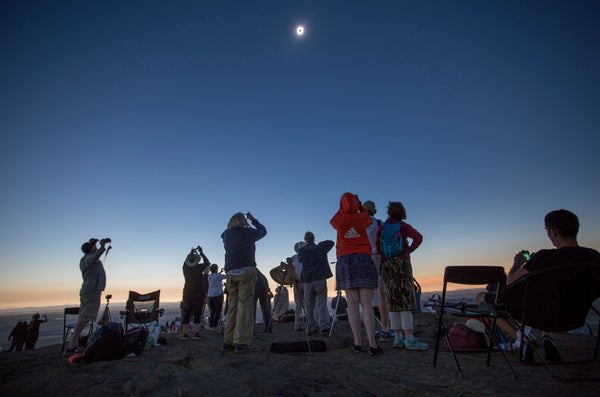Why Do Colors Change during a Solar Eclipse?
When the moon fully eclipses the sun, it’s not just the sky that changes. Your eyes do, too
In and around totality—the brief moments during a total solar eclipse when the moon fully hides the sun—the sudden shift from light to darkness can profoundly change color perception.
Natalie Behring/Getty Images
This article is part of a special report on the total solar eclipse that will be visible from parts of the U.S., Mexico and Canada on April 8, 2024.
Sitting in the grass of a Tennessee state park, Tracy Gregg felt the air grow cold as the late afternoon light she’d been bathing in suddenly faded. It was August 21, 2017, the date of a total solar eclipse that swept across much of the U.S., and she was directly in its path. Overhead, the moon was sliding into place over the sun, engulfing all below in shadow. In the brief darkness of totality, as lunar gloom consumed the land, Gregg tore her gaze momentarily from the sky to see the verdant meadow around her surprisingly transformed, now saturated in striking hues of violet and lavender.
Gregg, like most other people privileged to witness this rare celestial event, had experienced what is called the Purkinje effect, or a natural shift in color perception caused by fluctuating light levels. In bright light, colors such as red and orange are rich and vibrant to the human eye, compared with blue and green. But in dim light, red and orange become dark and muted, while purple, blue and green brighten. Sunlight’s rapid, dramatic dimming during a total solar eclipse can heighten this phenomenon, making such events all the more surreal.
On supporting science journalism
If you’re enjoying this article, consider supporting our award-winning journalism by subscribing. By purchasing a subscription you are helping to ensure the future of impactful stories about the discoveries and ideas shaping our world today.
On April 8 the moon will once again pass…
Read the full article here







